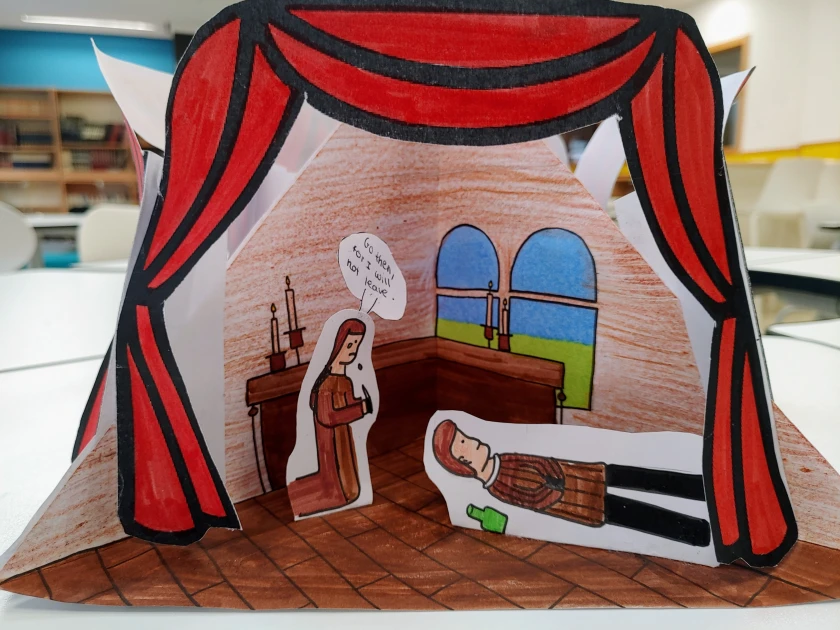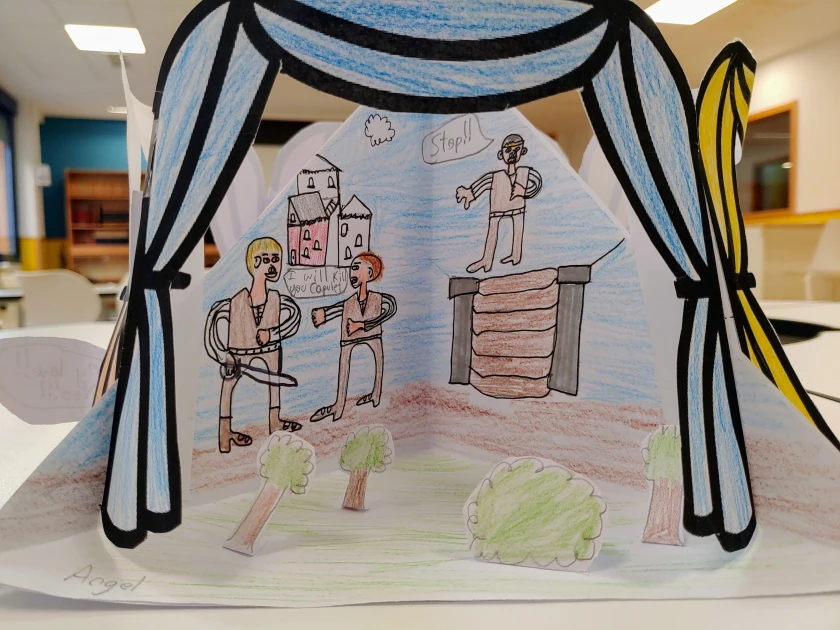To check comprehension of a B1 graded reader based on Shakespeare’s “Romeo and Juliet”, I asked my younger students to choose four key scenes or snapshots from the play and plan a short oral presentation explaining their choices, including:
– a description of each “snapshot”, including the setting, the characters and the action;
– which part of the plot they belong to;
– why they think they are important, providing at least three reasons.


Working in pairs, the students created a paper diorama for each scene which helped them both with the planning process and as a visual aid in the presentation. To make these dioramas, we simply used regular DIN-A4 white paper:
1. Fold the paper to make a square.


2. Fold the paper again so that it is folded on both diagonals.


3. Cut on one of the folds to the centre.

And there you go!

We even tried some stage curtains on each diorama!


This type of diorama makes it easy for students to take home before assembling and gluing them together, and for pairs to distribute the amount of work to be done.




The pairs of students finally took turns explaining their choices, followed by several questions from the audience. (And they did really well!)
For other similar post-reading ideas, you may want to check the following:
– “A Midsummer Night’s Dream”: an alphabet book.
– One-pagers: “The House on Mango Street”





Wonderful idea! I love what your students made-thanks for the photos. And the curtains … simply brilliant! 💡💡💡💡
LikeLiked by 2 people
The curtains took the project to a whole new level, haha!
Thanks for commenting, Rachel!
LikeLiked by 1 person
I love how you engage your students and build their understanding of the situations. Great ideas, as usual. I’ll try to spread the post among my students. Thanks a lot!
LikeLiked by 2 people
Thank you!!
LikeLike
Reblogged this on More than Teaching.
LikeLike
I love these ideas and really want to use them! I’ve recently been taking a y9 English class of EAL students. They’re studying poetry for the first time. It makes me think how good it would be to teach English through literature, CLIL-style, much more often. Imagine going through all of your schooling and coming out not knowing what a metaphor is because the only language lessons you have are English language ones, where you read text book article after text book article. It doesn’t come up in FCE or CAE or IGCSE E2L. (Hm, I feel a blog post coming on…) I have been asked to focus on PET preparation with this group now, but I’m definitely going to try to find a way to use some of these ideas somehow – thank you!
LikeLiked by 1 person
Hi Emma! Thanks for commenting!
Part of the curriculum in secondary education CLIL schools here in Madrid used to be literature-based, although it was modified a few years ago to include other types of non-fiction texts. I do think it makes a difference.
Looking forward to reading that blog post! 😉
LikeLike